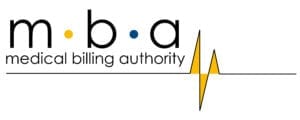Why do I need help enrolling my providers in network with insurance companies?
I mean, it’s only a matter of filling out a couple of forms for the insurance company, right?
It may seem like it should be that easy, but in fact, provider enrollment has many steps. Each insurance payer has their own process. Although state and federal rules exist, nothing in the industry is standardized. Each payer and each state has specific requirements and processes before credentialing is complete and the provider is added into a professional provider network.
Although the terms are used interchangeably sometimes, let’s define the difference between Provider Enrollment and Credentialing
Provider Enrollment is the process of applying to enroll an individual practitioner or group as an in-network or participating provider with a payer. This includes completing a credentialing application, providing required documentation and appropriate signatures and disclosures regarding the provider’s education, professional licensure, education, employment and malpractice history—including any and all reportable legal actions and professional sanctions. It is essential that the application be accurate and honest in all respects. The Enrollment Specialist monitors expiration dates on the provider’s credentials and tracks each payer application to ensure it is properly processed.
Credentialing– is the process that the payer uses to confirm all the information on the provider enrollment application and approve or deny the request to be part of their approved provider network. This “Primary Source Verification” and subsequent credentialing committee approval process can take 30-90 days depending on the payer. Each application is screened and requests are sent to each data source to verify dates, status, and if there are any modifications or inaccuracies. Once everything is verified, that documentation is compiled with the application and presented a credentialing committee who vote to approve or deny the provider for inclusion in the payer’s network. By federal law, payers have up to 180 days to accomplish the credentialing process—although most payers complete the process within 90 days. During this whole process however, the provider is out of network with that insurance company. If the provider/group requires contracting with the payer, you can expect to add another 30 days for that phase to be completed.
The Provider Enrollment Specialist’s responsibilities include not only filling out the correct forms, but making sure all required documentation is sent in and then following up with frequent contacts to the payer for status on the process. Many payers utilize their own online web portal to collect the “provider enrollment application” information. The Enrollment Specialist must be able to navigate multiple websites, follow intricate application instructions and upload documentation in approved formats. Many times, the payer may have a question, or require some obscure document for clarification and without that, the entire process is on hold.
The time required for the enrollment process a provider varies with each payer. The Enrollment Specialist must have intricate knowledge and understanding of all the “alphabet-soup” of acronyms and misnomers used by payers and credentialing entities. CAQH, NPPES, PECOS, CVO, PSV, HMO, MCO, …”LMNOP-XYZ’. The Enrollment Specialist’s duties and responsibilities are a critical function in the health care field. The responsibility for payer enrollment is not something that the provider or practice can afford to treat lightly or assign to just anyone on staff. It takes experience, dedication to detail, self-discipline and computer skills to track and respond to payers’ processes with professionalism and accuracy. All these factors ensure your practice and providers are correctly credentialed and added to the payer networks which directly effects your cash-flow and productivity.
Cheryl W.
Head of Credentialing, Medical Billing Authority
